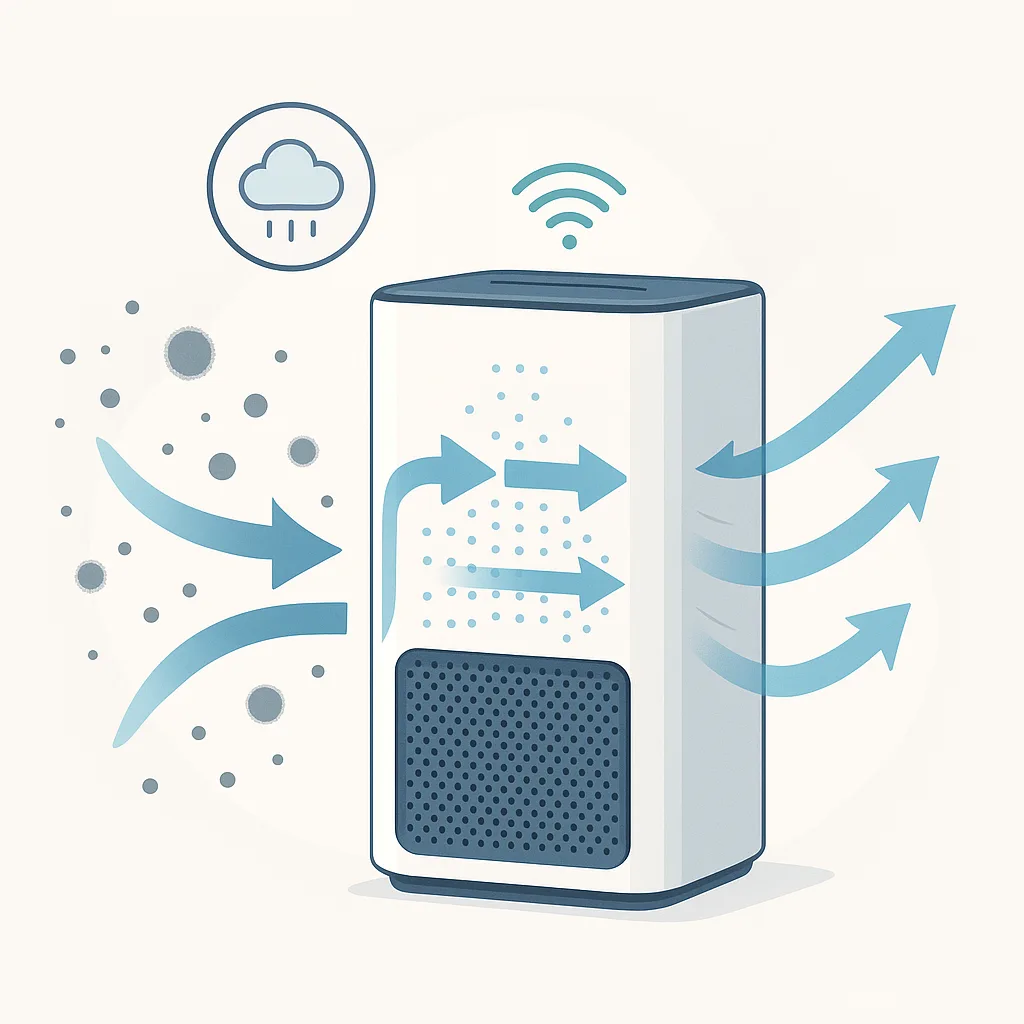Indoor air quality has become a major health concern in modern living. From allergens and dust to volatile organic compounds (VOCs) and pollution, our homes and offices are filled with invisible threats. Enter AI-powered air purifiers—the next generation of smart devices designed to detect, analyze, and clean air with greater precision than ever before. But how do these futuristic gadgets really work?
This article dives into the inner workings of AI-driven air purifiers, demystifying the technology that allows them to adapt to changing environments and make intelligent decisions to keep your air cleaner, automatically.
What Makes an Air Purifier “AI‑Powered”?
Traditional air purifiers often run continuously at a fixed speed or rely on basic timers or manual settings. AI-powered air purifiers, on the other hand, leverage machine learning algorithms, sensor fusion, and real-time data analysis to enhance performance in the following ways:
- Detect air quality changes instantly
- Adapt fan speed and filtration intensity dynamically
- Predict pollution trends based on usage patterns and external factors
- Optimize energy usage based on environment and occupancy
At their core, these smart systems don’t just clean air—they understand it.
Core Components of an AI‑Powered Air Purifier
1. Air Quality Sensors
These sensors measure multiple airborne pollutants in real-time:
- Particulate matter (PM2.5 and PM10)
- Carbon dioxide (CO₂) levels
- Volatile Organic Compounds (VOCs)
- Humidity and temperature
The data is collected at high frequency and sent to the AI engine for analysis.
2. Machine Learning Engine
The onboard AI processes sensor data and uses trained models to:
- Identify pollution spikes (e.g. from cooking, smoking, or open windows)
- Learn user behavior (e.g. air quality drops during certain times or activities)
- Predict future air quality issues and pre-activate purification steps
- Improve accuracy over time by learning from feedback and historical patterns
3. Smart Fan and Filtration Control
AI adjusts internal components such as:
- Fan speed to increase or reduce airflow depending on real-time pollution levels
- Ionizers, UV lights, or other active filters when needed
- Alerts or automation via smart home systems to notify users or coordinate with HVAC
The result: maximum purification when it’s needed, and energy savings when it’s not.
AI-Enhanced Filtration Systems
While HEPA filters remain the gold standard for physical particle removal, AI systems elevate their effectiveness by managing:
- Filter usage lifecycle — predicting when filters should be replaced, not just based on time but on pollution exposure.
- Optimized airflow routing — ensuring even distribution across filter surfaces to extend lifespan.
- Dynamic stage activation — activating carbon or UV filters only when VOCs or germs are detected.
This makes filter systems smarter, more efficient, and longer-lasting.
Real-Time Monitoring and Feedback Loops
A hallmark of AI air purifiers is their ability to form closed feedback loops:
- Sensors detect pollution →
- AI evaluates severity and source →
- Purifier adjusts performance →
- New air quality readings feed back into the system
This loop operates autonomously, making real-time decisions without human intervention.
Some models go a step further, integrating with smartphone apps or smart home platforms to provide:
- Visual air quality dashboards
- Historical pollution data trends
- Smart scheduling and automation rules
- Location-based optimization (e.g., adjusting based on outside AQI)
Benefits of AI in Air Purification
- Precise air quality control with less user involvement
- Energy efficiency by only activating high-power modes when needed
- Extended filter life through predictive usage modeling
- Personalized performance that adapts to your living habits
- Faster response to pollution events, improving health outcomes
Common Use Cases
AI-powered air purifiers are ideal for:
- Urban homes exposed to external pollution
- Homes with pets or children, where dust and allergens are frequent
- Offices needing adaptive indoor air quality management
- Asthma or allergy sufferers seeking precision air cleaning
- Smart homes, integrating air purification with other IoT devices
The Future of AI-Driven Air Purification
Emerging trends include:
- Voice assistant integration for more intuitive control
- Multi-room coordination between multiple air purifiers
- Environmental awareness to coordinate with outdoor air sensors
- AI training on local conditions, improving performance in unique settings
- Self-learning filter management, where filters communicate their own performance status
We’re approaching a time when air purification becomes fully automated—just like climate control or lighting—ensuring optimal air at all times, intelligently managed in the background.
Conclusion
AI-powered air purifiers represent a leap forward in indoor air management. By combining advanced sensors, machine learning, and smart automation, these devices ensure cleaner air more efficiently and intelligently than ever before. For households and workplaces alike, they offer a smarter way to breathe easy.


